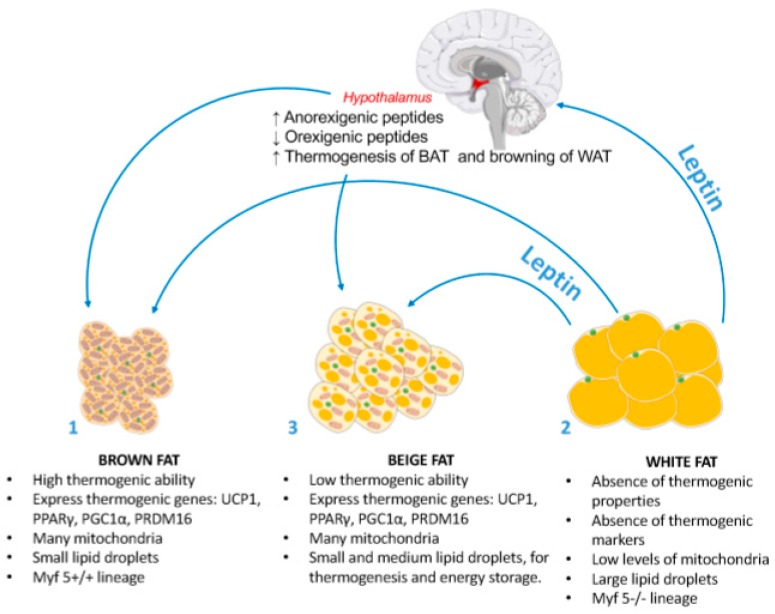Figure 1.
Thermogenic actions of brown, beige and white fat. (1) Brown adipose tissue (BAT) is responsible for heat production to maintain cell homeostasis through a process called thermogenesis. The anatomical features of brown adipocytes are adapted for thermogenesis: many mitochondria using the surrounding multi-locular lipid droplets as fuel to dissipate energy and produce heat. Furthermore, brown adipocytes express several thermogenic markers such as UCP1, PPARγ, PGC1α and PRDM16. Finally, brown adipocytes originate from myogenic (Myf5+/+) lineage like myocytes. (2) On the other hand, white adipose tissue (WAT) is responsible for energy storage. In white adipocytes, fat accumulates in large lipid droplets (responsible of white adipocytes big diameter) that occupy the entire cytoplasm. White adipocytes do not carry any thermogenic functions nor thermogenic markers. (3) Beige fat has intermediate anatomical and functional characteristics between white and brown adipocytes. Thus, beige adipocytes emerge in white fat depots bearing thermogenic functions and expressing some thermogenic markers (at a lower proportion than BAT). Beige adipocytes can also store fat. Leptin is released by WAT and exerts its actions at central and peripheral levels. At a hypothalamic level, leptin favours anorexic effects through the overexpression of anorexigenic peptides and down-regulation orexigenic ones. Furthermore, leptin exerts its thermogenic actions in 2 different manners: (i) direct interactions with brown and beige adipocytes and (ii) through hypothalamic actions. UCP1, uncoupling protein 1; PPARγ, peroxisome proliferator-activated receptor γ; PGC1α, proliferator-activated receptor-gamma coactivator 1α; PRDM16, PR domain containing 16.

